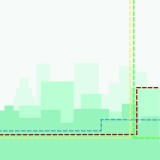“Smart cities” are the new urban structures. Utilizing technology, their aim is to provide services to citizens and improve their living conditions. Nowadays, as the references to “smart cities” seem to increase, it’s vital to conduct a study on this term, as well as an analysis of its characteristics.
Equally important is the study of the interaction between the scientific field of architecture and “smart cities”. In particular, as architects, we need to explore our role in this new type of city and our potential contribution to its development and improvement.
Consequently, the goal of this research paper is to explore the term “smart city”, to understand its characteristics and the way it works, and most importantly, to point the contribution of the architect.
Initially, an extensive bibliographical study of the definition of the term “smart cities” is carried out. Following the analysis of the two individual words that compose the term “smart cities”, we explore the reasons that led to the emergence of the aforementioned term, as well as the different types of smart cities and the structure of such a city.
Then, we study digital applications at different scales, ranging from those ones that are implemented in buildings to those that are found in the city itself, while placing emphasis on the way that architecture interacts with them.
Through the above process, and in particular through the study of applications in “smart cities”, we are able to reach conclusions regarding the architect’s contribution to the creation and development of this urban structure.
This way, it’s evident that the architect, because of their skills as well as through architectural design, plays an important role when it comes to particular levels of smart cities and his contribution proves to be valuable, while, at other levels, his role is considered relatively supervisory.
